Agate Moss: Properties, Uses and Virtues
Agate Mousse: The short version for people in a hurry!
Agate Mousse is a unique variety of agate and quartz with a hardness of 6.5 to 7 on the Mohs scale. It is mined in various parts of the world, including South America, Canada and India, and has a long history of use in jewelry, dating back to Antiquity. Appreciated for its aesthetic and metaphysical properties, it emits soothing energy and promotes mental clarity.
Its appearance varies from white to green with greenish to black inclusions. Although it is rarely processed and unlikely to be synthesized, it is essential to know its distinctive characteristics in order to distinguish genuine Moss Agate from imitations.
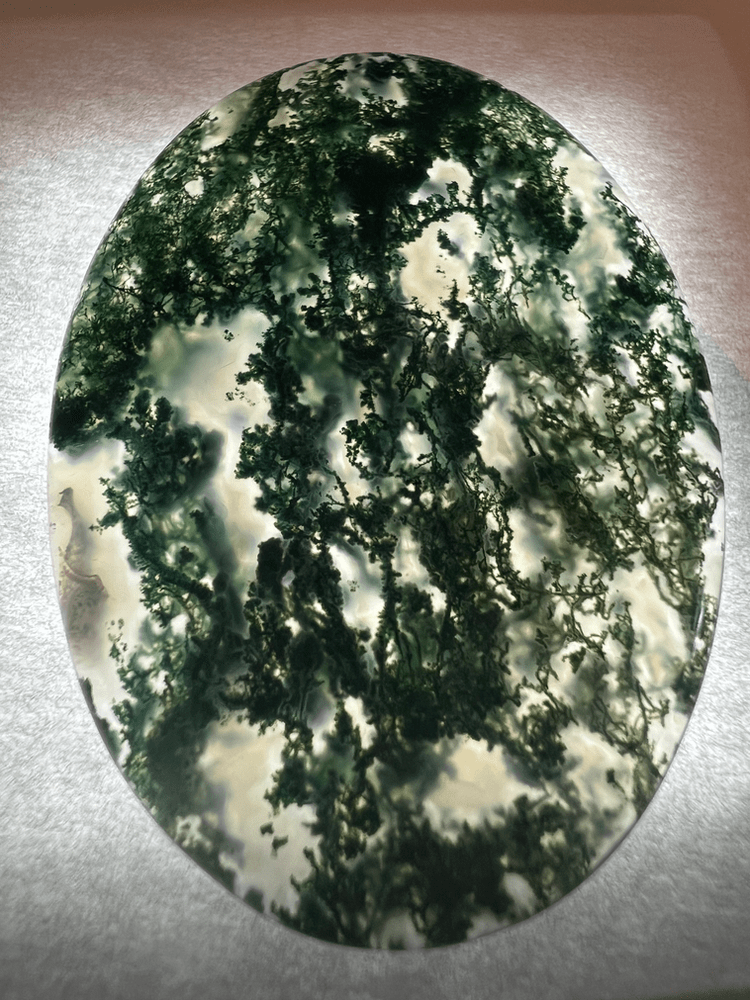
Agate Mousse: Table of contents
- Agate Mousse: The short version for people in a hurry!
- Geological formation of Moss Agate
- Agate Mousse Brute – Natural Radiance Revealed
- Sources – The Worldwide Presence of Moss Agate
- History of Moss Agate – A Mystical Heritage
- Metaphysical properties of Moss Agate – Serenity Energy
- Varieties of Moss Agate
- Color of Moss Agate
- Durability and portability of Agate Mousse
- Enhancements for Moss Agate – Preserving its natural splendor
- Agate Mousse Synthétique – Natural Laboratory Inspiration
- Imitations of Moss Agate – Distinguishing the Genuine
- Agate Mousse care – Preserving its natural beauty
- Sources
Geological formation of Moss Agate
Moss Agate is a variety of Agate and Quartz that forms in quartz veins where silicates slowly crystallize, capturing mineral inclusions in the form of greenish “mosses” or “lichens”.
Agate Mousse Brute – Natural Radiance Revealed
In its raw form, Moss Agate is distinguished by its distinctive polycrystalline structure, composed of microscopic crystals. It will not appear as individual crystals, but as rocks.
Sources – The Worldwide Presence of Moss Agate
Moss Agate is mined in various parts of the world, including South America, Russia, Canada and India.
History of Moss Agate – A Mystical Heritage
Moss agate, like many minerals, has no single discoverer attributed to it, due to its natural occurrence over a long geological period. (The earliest written mention I could find is in Ed Clarke’s 1807 syllabus, which groups quartz by variety).
Ancient Greece: Moss Agate was used as an ornamental stone in ancient Greece, notably for making seals.
Ancient Rome: Like ancient Greece, ancient Rome used moss agate for ornamental stones and seals.
Old Europe: It is still possible to find superb pieces of moss agate jewelry dating from the 15th to the 19th century, particularly Italian pieces, on renowned antique auction sites and dealers, proving the continuing appeal of this stone. Some pieces are on display in museums.
China Qing Dynasty: Moss agate was also prized in Asia, particularly China, where it was sometimes used as an ornamental stone or carving stone.
Today, moss agate remains a very popular gem, both in jewelry and among collectors. It’s becoming increasingly common for brides and grooms to turn to original alternatives to diamonds, and moss agate is one of them. (If you feel like it, here’s an article on affordable and rare alternative engagement stones!)
Metaphysical properties of Moss Agate – Serenity Energy
Moss Agate emits a soothing energy, balancing mind and body. It promotes mental clarity, dissolving troubled thoughts to make way for inner peace. This gemstone is an ideal companion for meditation and contemplation, facilitating harmony with the world around us.
Varieties of Moss Agate
Moss Agate has no varieties to speak of. However, it belongs to the inclusion agates, which also include feather agates, with feather-like inclusions, and dendritic agates, with inclusions resembling tree branches.
Color of Moss Agate
Moss agate can be white, colorless, transparent or with green areas. Its mossy or lichen-like inclusions are most often green to black, but can show red to brown hues.
Durability and portability of Agate Mousse
Agate Mousse, with a hardness of 6.5 to 7 on the Mohs scale, is generally durable. It is still advisable to choose protective jewelry such as closed settings. History proves that with a little care and attention, it’s possible to keep this little piece of land alive for centuries!
Enhancements for Moss Agate – Preserving its natural splendor
Moss agate is rarely treated.
Agate Mousse Synthétique – Natural Laboratory Inspiration
To my knowledge, synthetic moss agate does not exist on the gem and jewelry market. It’s more likely to find imitations.
Imitations of Moss Agate – Distinguishing the Genuine
In the face of imitations, it’s crucial to know the distinctive features of genuine Agate Mousse. Organic inclusions, natural patterns and the presence of crystallization are clues to its true nature. Most of the imitations on offer will be resins or plastics.
Agate Mousse care – Preserving its natural beauty
To preserve the natural beauty of Agate Mousse, regular maintenance is essential. Avoid harsh chemicals and opt for gentle cleaning to preserve shine and luster. With the right care, your Agate Mousse will continue to radiate its timeless beauty.
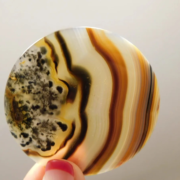
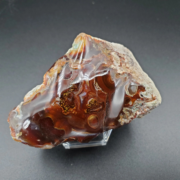
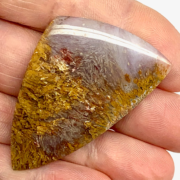
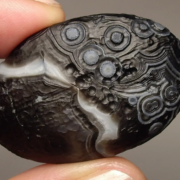
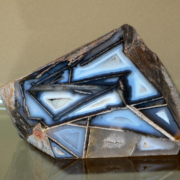


Leave a Reply
Want to join the discussion?Feel free to contribute!